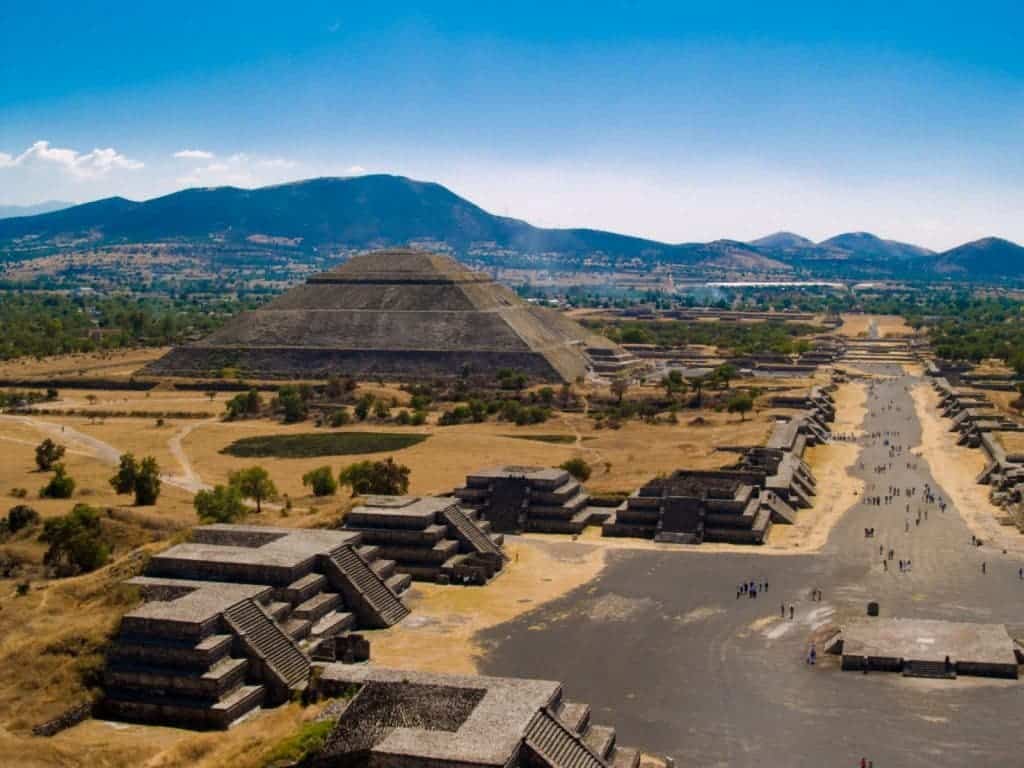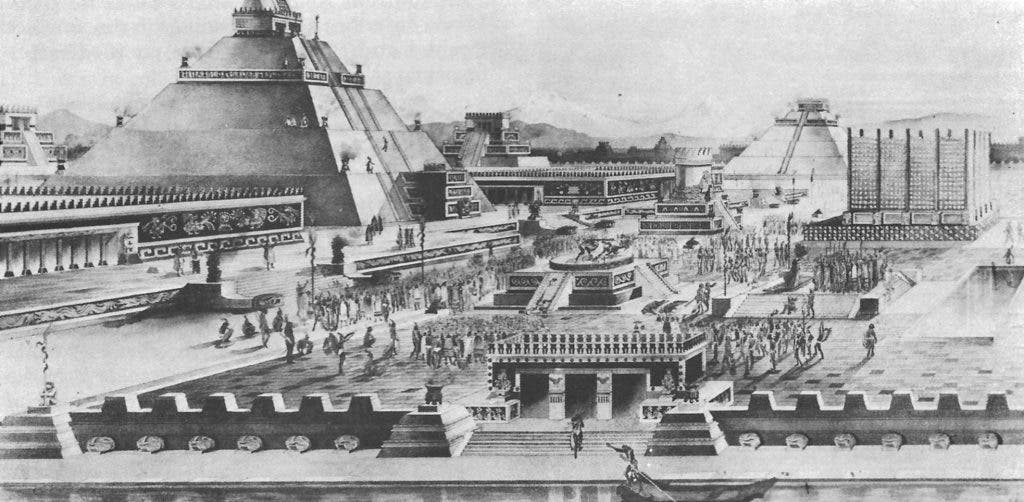The mighty Aztec capital of Tenochtitlan wasn’t all that different from New York City today, or any major city for that matter, despite the former has been deserted for 500 years. You see, both cities grew under the same rules, independent of political or economic systems, according to a new model.

The ruins of Teotihuacan Mexico are among the most important in the world. The fate of its civilization remains unclear, but we do know that this was once the center of an advanced society with a population of more than 200,000. The magnificent pyramids and palaces were abandoned in about 700 AD and little is known about the people. Image: Get in Tavel.
Scott Ortman, an anthropologist at University of Colorado, Boulder, heard a talk in Mexico City about a previous research which suggested that cities have this intrinsic characteristic of increasing productivity or economic returns to scale. In the talk, Luis Bettencourt, who studies complex systems at the Santa Fe Institute in New Mexico, found that as modern cities grow, their infrastructures are outpaced by the population, driven by powerful social networks. For better or for worse, cities bring together all sorts of people, most often than not some of the most specialized people in a given field.
When put together, these groups of urban dwellers spark social-economic change – they spearhead society. In other words, social interactions become magnified, and, as the study found, resource productivity increases along with wealth and income, all in a predictable manner. One of this rules says once a city’s population doubles, there’s a 15% increase in output per capita – this includes money, in terms of GDP, but also other forms of growth like patents.
Ortman was impressed by the findings, but he couldn’t help but notice that all of Betterncourt group’s findings had parameters which were independent of capitalism, industrialization, or other modern economic waves. Could these apply to any kind of city, even ancient ones? The two teamed up and examined a huge dataset of pre-Hispanic Basin of Mexico settlements, big and small. The survey covered 2,000 years of history, from about 500 B.C. up until the beginning of the colonial period in the 1500s. It spans an area of about 1,550 square miles (4,000 square kilometers), over which thousands of ancient settlements laid, including crown jewels like Teotihuacan and Tenochtitlan, both estimated to have had a population of 200,000.
Thousands of ancient homes and temples were analyzed. Bigger, more complex homes and likewise temples were used as proxies to gauge economic development, population density, and temple rate of use. The team found that settlements got larger and denser in a manner that mirrors modern urban growth. When a city already big enough to sustain a network populace – whether ancient or modern – doubles in population, its occupied surface are doesn’t double along. Instead, it grows at a rate that is 83% lower. The researchers explain that this is the result of a unspoken compromise between sharing personal space and maintaining social links. People want to stay close to their family, places of worship, markets, and so on. Too big a city, in terms of surface area, makes it difficult for people to maintain these links. Also, the rule of increasing returns from urban scaling also applied to ancient Aztec settlements. As cities grew in population, so did the rate at which they were able to produce monuments. This had the authors completely excited.
They write in Science Advances,
“It was shocking and unbelievable,” says Ortman. “We were raised on a steady diet telling us that, thanks to capitalism, industrialization, and democracy, the modern world is radically different from worlds of the past. What we found here is that the fundamental drivers of robust socioeconomic patterns in modern cities precede all that.”
“We have shown that in the pre-Hispanic BOM, larger population aggregates used space more efficiently, produced public goods more rapidly, and were more productive per household,” wrote Ortman, et al. in the report. “Further, the congruence of these results with theory suggests that the benefits of scale…..ultimately derive from the properties of strongly interacting social groups embedded in structural spaces. This reinforces our view that human settlements of all times and places function in the same way by manifesting strongly interacting social networks, thus magnifying rates of social interaction and increasing the productivity and scope of material resources, human labor, and knowledge.”
“Our results suggest that the general ingredients of productivity and population density in human societies run much deeper and have everything to do with the challenges and opportunities of organizing human social networks,” said Santa Fe Institute’s Professor Luis Bettencourt, a co-author of the study.










